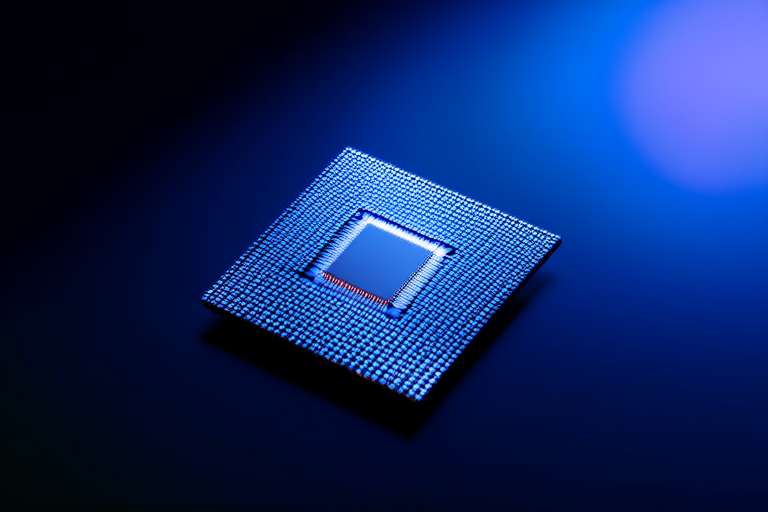“`html
Quantum Leap: Understanding the Basics of Quantum Computing
Introduction
Quantum computing represents a revolutionary leap in the world of technology, promising to solve complex problems that are currently beyond the reach of even the most powerful classical computers. Unlike traditional computing, which relies on binary bits to process information, quantum computing harnesses the unique properties of quantum mechanics to perform calculations at unprecedented speeds. This technology has the potential to transform numerous fields, including cryptography, drug discovery, and optimization problems.
The concept of quantum computing is rooted in the principles of quantum mechanics, a branch of physics that describes the behavior of particles at the smallest scales. By leveraging phenomena such as superposition, entanglement, and interference, quantum computers can process vast amounts of data simultaneously, offering solutions to problems that would take classical computers millions of years to solve. In this article, we will explore the fundamentals of quantum computing, its key concepts, and its potential impact on various industries.
What is Quantum Computing?
To understand quantum computing, it is essential first to grasp the basics of classical computing. Classical computers operate using bits, which can exist in one of two states: 0 or 1. These bits are combined to form instructions that the computer follows to perform tasks. However, classical computing faces limitations when dealing with large datasets or complex computations, leading to inefficiencies and longer processing times.
Quantum computing, on the other hand, uses quantum bits, or qubits, which can exist in multiple states simultaneously due to a principle known as superposition. This allows quantum computers to process vast amounts of information at once, vastly increasing their computational power. Additionally, qubits can become entangled, meaning the state of one qubit can depend on the state of another, regardless of the distance between them. This property, known as entanglement, enables quantum computers to perform calculations that would be impossible for classical computers.
In summary, while classical computers rely on bits to perform calculations, quantum computers use qubits, which exploit the principles of superposition and entanglement to process information in ways that classical computers cannot. This makes quantum computing a highly promising field with the potential to revolutionize many areas of science and technology.
Key Concepts
Superposition
One of the fundamental principles of quantum computing is superposition. In classical computing, a bit can only be in one of two states: 0 or 1. However, in quantum computing, a qubit can exist in a superposition of both 0 and 1 simultaneously. This means that a quantum computer can process multiple possibilities at once, significantly increasing its computational power.
To illustrate superposition, consider a coin spinning in the air. While the coin is spinning, it is neither heads nor tails; instead, it exists in a superposition of both states. Similarly, a qubit in superposition can represent multiple values at the same time, allowing quantum computers to explore many possible solutions simultaneously.
Entanglement
Another crucial concept in quantum computing is entanglement. When two or more qubits become entangled, the state of one qubit is directly related to the state of the other, even if they are separated by large distances. This phenomenon, known as quantum entanglement, allows quantum computers to perform complex calculations much faster than classical computers.
To understand entanglement, imagine two dice that are perfectly synchronized. If you roll one die and it lands on a 6, the other die will also land on a 6, no matter how far apart they are. In quantum computing, entangled qubits work similarly, enabling quantum computers to perform calculations that would be impossible for classical computers.
Interference
Interference is another important principle in quantum computing. It refers to the way waves interact with each other, either constructively or destructively. In quantum computing, interference helps amplify correct solutions and cancel out incorrect ones, improving the efficiency of quantum algorithms.
Imagine a room filled with sound waves from different sources. Some waves will reinforce each other, creating louder sounds, while others will cancel each other out, creating quieter spots. In quantum computing, interference works similarly, helping to enhance the correct solutions and eliminate the incorrect ones, making quantum algorithms more efficient.
Quantum Algorithms
Quantum algorithms are designed to take advantage of the unique properties of quantum computing, such as superposition and entanglement, to solve problems more efficiently than classical algorithms. Two of the most famous quantum algorithms are Shor’s algorithm and Grover’s algorithm.
Shor’s Algorithm
Shor’s algorithm is a quantum algorithm for factoring large numbers into their prime factors. This task is computationally intensive for classical computers, but Shor’s algorithm can solve it exponentially faster. The ability to factor large numbers quickly has significant implications for cryptography, as many encryption methods rely on the difficulty of factoring large numbers.
For example, RSA encryption, widely used for secure communication over the internet, depends on the difficulty of factoring large numbers. With Shor’s algorithm, quantum computers could potentially break RSA encryption, necessitating the development of new cryptographic methods that are resistant to quantum attacks.
Grover’s Algorithm
Grover’s algorithm is a quantum search algorithm that can find items in an unsorted database quadratically faster than classical search algorithms. This improvement in speed can have significant practical applications, particularly in fields such as optimization and machine learning.
For instance, Grover’s algorithm could be used to optimize supply chains, improve logistics, or accelerate drug discovery by searching through vast databases of molecular structures more efficiently than classical computers.
Challenges and Future Outlook
Despite its potential, quantum computing still faces several challenges. One of the primary challenges is developing stable qubits that can maintain their quantum states long enough to perform meaningful calculations. Another challenge is building scalable quantum computers that can handle large numbers of qubits without losing coherence.
However, significant progress is being made in overcoming these challenges. Researchers are exploring new materials and techniques to improve qubit stability and scalability. For example, trapped ions and superconducting circuits are two promising approaches that show great potential for building reliable quantum computers.
Looking ahead, quantum computing holds immense promise for transforming various industries. In addition to cryptography and drug discovery, quantum computing could revolutionize fields such as artificial intelligence, finance, and climate modeling. As researchers continue to push the boundaries of quantum technology, the possibilities seem almost limitless.
Conclusion
Quantum computing represents a paradigm shift in the way we think about computation. By harnessing the principles of quantum mechanics, quantum computers can solve complex problems that are currently beyond the reach of classical computers. From breaking encryption to optimizing supply chains, the potential applications of quantum computing are vast and varied.
While there are still challenges to overcome, the rapid advancements in the field suggest a bright future for quantum computing. As researchers continue to refine quantum algorithms and build more powerful quantum computers, we can expect to see groundbreaking innovations across many industries. The excitement and promise of this technology are undeniable, and it is an exciting time to be involved in the field of quantum computing.
“`




